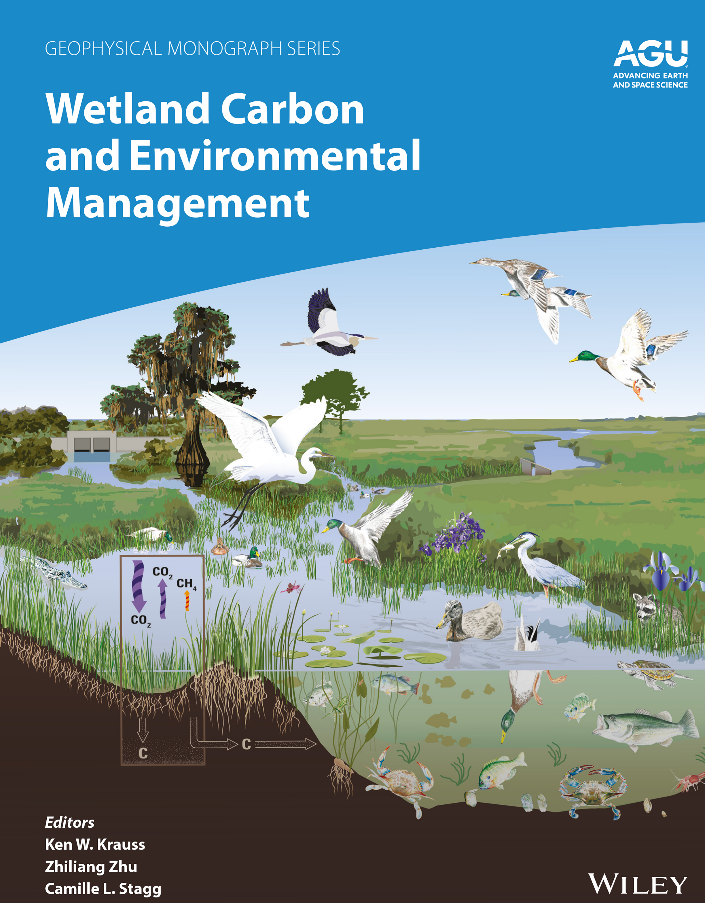- Home
- About
- Programs
- Carbon Science Planning
- Resources
- News & Opportunities
- Contact Us
New Book: Wetland Carbon and Environmental Management
October 19, 2021
How can the management of wetlands influence carbon stocks and fluxes? You will find some comprehensive answers in this book that was just published by the American Geophysical Union. Former co-chair of the CCIWG, Dr. Zhiliang Zhu (USGS) co-led this publication, with colleagues from the carbon cycle science community including the US Carbon Cycle Science Program Office Director, Dr. Gyami Shrestha as contributor.
Wetland Carbon and Environmental Management
Editor(s):
Ken W. Krauss, Zhiliang Zhu, Camille L. Stagg
First published:19 October 2021
Print ISBN:9781119639282 |Online ISBN:9781119639305 |DOI:10.1002/9781119639305
© 2022 American Geophysical Union
Book Series:Geophysical Monograph Series
The book contains 25 chapters distributed across three parts:
Part I : Introduction to Carbon Management in Wetlands
Part II : Tidal Wetlands
Part III : Non-Tidal and Inland Wetlands
Excerpt from the Preface:
Explore how the management of wetlands can influence carbon storage and fluxes
Wetlands are vital natural assets, including their ability to take-up atmospheric carbon and restrict subsequent carbon loss to facilitate long-term storage. They can be deliberately managed to provide a natural solution to mitigate climate change, as well as to help offset direct losses of wetlands from various land-use changes and natural drivers.
Wetland Carbon and Environmental Management presents a collection of wetland research studies from around the world to demonstrate how environmental management can improve carbon sequestration while enhancing wetland health and function.
This volume highlights include:
- Overview of carbon storage in the landscape
- Introduction to wetland management practices
- Comparisons of natural, managed, and converted wetlands
- Impact of wetland management on carbon storage or loss
- Techniques for scientific assessment of wetland carbon processes
- Case studies covering tropical, coastal, inland, and northern wetlands
- Primer for carbon offset trading programs and how wetlands might contribute


